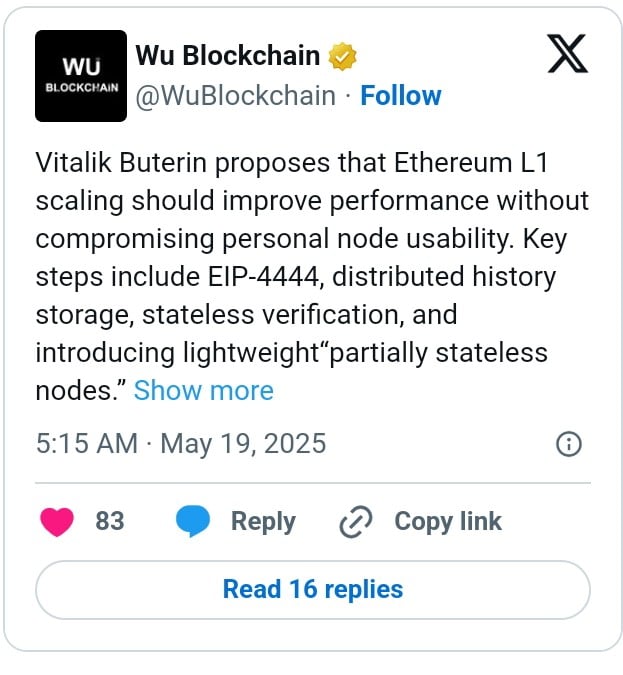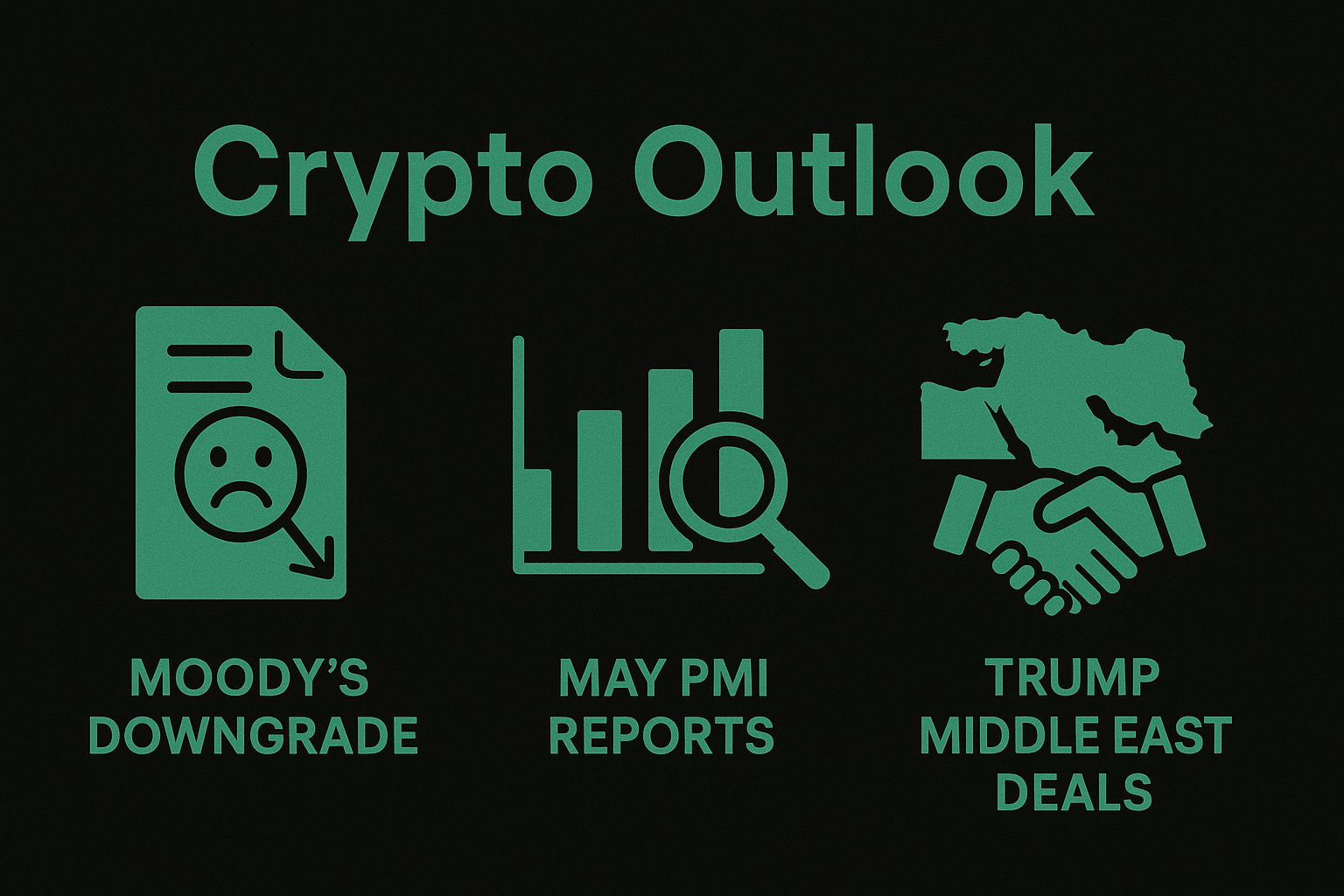ARTICLE AD BOX

- Vitalik Buterin, Ethereum’s co-founder, has proposed a full rollout of EIP-4444 and other short-term priorities to improve network performance.
- The value of ETH has declined by almost 5% in the last 24 hours as the asset struggles to hold above a crucial support level.
Ethereum (ETH) could embark on another technical upgrade after the co-founder, Vitalik Buterin, proposed key steps to improve the performance of the network without compromising personal node visibility.

In a blog post, Vitalik highlighted that the calls to increase the layer 1 gas limit have been met with concerns about the network’s safety and how it could make it difficult to run a full node. According to him, there has been a long conversation around the thinking that full nodes are primarily for validating the chain.
Also, Vitalik highlighted that a roadmap published last month underlined TEEs and ORAM as short-term patches while PIR was considered for a long-term solution. Combining these with Helios and ZK-EVM would ensure that users are confident that they are getting the correct chains, and also, their data privacy is protected.
While these advanced cryptographic solutions make self-hosted nodes an outdated relic, Vitalik believes that it is not worth stopping there since fully trustless cryptographic solutions would be expensive.
Additionally, there could be a censorship vulnerability. For these reasons, there is a need to continue to ensure a greater ease of running personal nodes. To do this, Vitalik has listed three short-term priorities and a medium-term priority to boost performance.
The Proposed Priorities to Boost Ethereum’s (ETH) Performance
Firstly, Vitalik suggested a full rollout of EIP-4444, where each node stores data for around 36 days. According to him, this would reduce disk space requirements and offset the issue that has been preventing people from running nodes. Apart from this, Vitalik suggests building a distributed history storage solution to ensure that each node can “store a small percentage of historical data older than cutoff.”
Lastly, he proposes adjusting the gas pricing to ensure that storage is more expensive while execution is less expensive.
For the medium-term priority, Vitalik suggests that there should be a stateless verification to make it possible to run an RPC-capable node. Fascinatingly, this would be done without storing state Merkle branches, decreasing storage requirements by around 2x. Concluding the post, the Ethereum co-founder highlighted that this idea would effectively allow personal node operation even when the L1 gas limit grows by 100x.
We add a node type which verifies blocks statelessly, and verifies the whole chain (either through stateless validation or ZK-EVM) and keeps up-to-date a portion of the state. The node is capable of responding to RPC requests as long as the required data is within that subset of the state; other requests will fail.
Recently, Ethereum embarked on a Pectra upgrade to improve performance and the overall user experience. As noted in our previous discussion, this increased the amount validators can stake from 32 ETH to 2,048 ETH.
Also, its Fusaka hard fork has been fixed in the third or fourth quarter of the year. As also summarised in our previous news coverage, this would make the Ethereum Smart Contracts run more securely and smoothly.
At press time, ETH was trading at $2,400 after declining by 4.9% in the last 24 hours. According to our recent analysis, the asset likely mirrors its 2017 setup by surging by 25,000%.
.png)
 3 hours ago
1
3 hours ago
1








 English (US)
English (US)